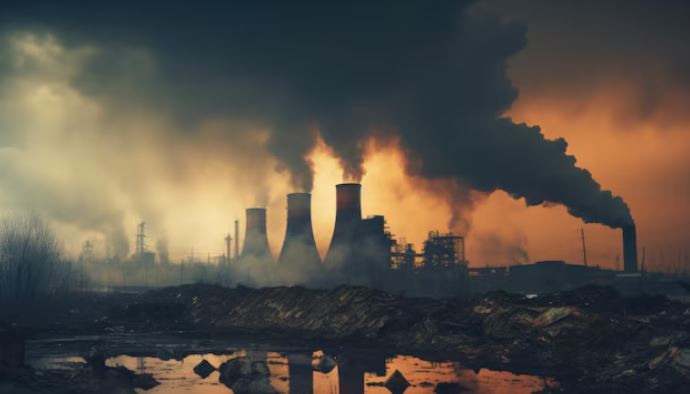Environmental Pollution - Intro

INTRODUCTION:
Environmental pollution refers to the introduction of harmful materials, known as pollutants, into the environment. These pollutants can be natural, such as volcanic ash, or created by human activity, such as trash or runoff produced by factories. They damage the quality of air, water, and land.
Pollution can take various forms:
1. Air Pollution: This involves the release of pollutants into the air that are harmful to human health and the planet as a whole. The main sources of air pollution are transportation, energy production, burning of waste, and industrial processes.
2. Water Pollution: This occurs when harmful substances such as microorganisms, chemicals, or waste materials contaminate a body of water, degrading water quality and rendering it toxic to humans or the environment.
3. Land Pollution: This involves degradation of the Earth’s land surfaces often caused by human activities and their misuse of land resources. It occurs when waste is not disposed of properly and can lead to soil contamination.
4. Noise Pollution: This is caused by excessive noise produced by machines, transportation systems, public events, or people, which can lead to harmful effects on human and animal life.
5. Light Pollution: This is caused by excessive, misdirected, or obtrusive artificial light. It can have serious environmental consequences for humans, wildlife, and our climate.
6. Thermal Pollution: This is the degradation of water quality by any process that changes ambient water temperature. It’s usually caused by human activities, such as the use of water as a coolant in power plants.
7. Radioactive Pollution: This is the presence of radioactive substances in the environment. It is highly dangerous when it occurs because it can inflict damage on human health.
Pollution of all kinds can have negative effects on the environment and wildlife and often impacts human health and well-being. Although environmental pollution can be caused by natural events such as forest fires and active volcanoes, use of the word pollution generally implies that the contaminants have an anthropogenic source—that is, a source created by human activities.
Several ways to reduce pollution and contribute to a healthier environment:
1. Energy Efficiency: Boosting energy efficiency is a great way to reduce your carbon footprint and trim your energy expenses.
2. Sustainable Transportation: Transportation is a major source of pollution. Opting for public transportation, Cycling, or walking helps decrease air pollution. Also, using cars with increased fuel efficiency or electric cars that do not rely on fossil fuels can decrease the amount of pollution
we contribute to the atmosphere.
3. Recycling and Waste Reduction: Proper waste management, including recycling and composting, can significantly reduce pollution.
4. Planting Trees and Urban Gardening: Trees absorb CO2 and other pollutants, improving air quality. Urban gardening can also help to reduce the urban heat island effect.
5. Supporting Renewable Energy Sources: Using renewable energy sources like solar, wind, and hydro can significantly reduce pollution.
6. Water Conservation: Conserving water reduces the amount of wastewater and runoff that ends up in our oceans.
7. Reducing Single-Use Plastics: Single-use plastics are a major source of pollution. Opting for reusable items whenever possible can make a big difference.
8. Green Building: Green building practices, such as using sustainable materials and incorporating energy-efficient systems, can reduce the environmental impact of construction.
*Remember, even small changes can make a big difference when it comes to reducing pollution*
